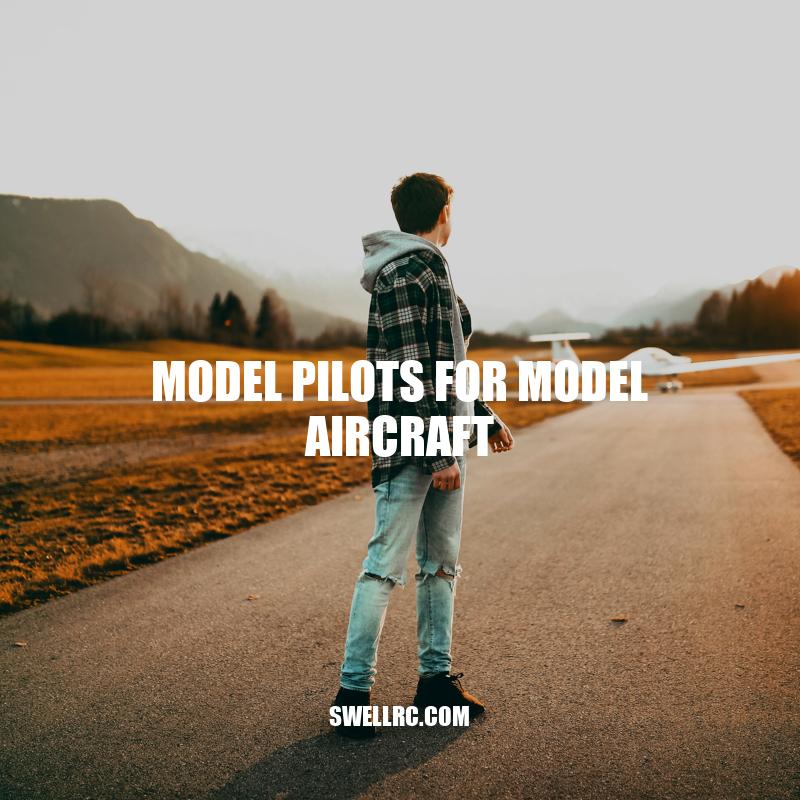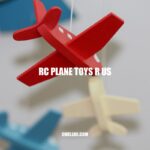Model Pilots: Essential Skills and Practices for Model Aviation
Model aircraft enthusiasts have been perfecting their skills in flying miniature aircraft for decades, and one essential aspect of this community is the skilled Model Pilots who operate these models. A Model Pilot is an individual responsible for flying a model aircraft, carrying out complex and intricate maneuvers, and maintaining their control throughout the flight. Being a Model Pilot is a challenging profession that requires significant dedication, focus, and expertise. Model Pilots receive training in model aviation clubs, where they develop techniques to handle a wide range of model aircraft. They must master the art of flying the model aircraft, irrespective of the complexity, speed, or the weight of the aircraft. In addition to these skills, Model Pilots are also responsible for ensuring the safe operation of the model aircraft, preventing potential accidents and damages to the aircraft. To be a successful Model Pilot, one must have a solid understanding of the principles of flight, aerodynamics, and be up-to-date with governing rules and regulations. While it takes a significant amount of time and practice to master, those who become Model Pilots develop a sense of pride in their work and an unmatched level of skill. The future of model aviation depends on their contributions and expertise.
Training to become a Model Pilot
Model Pilots come from all walks of life, and they all share a passion for flying model aircraft. However, becoming a skilled Model Pilot is not easy and demands significant dedication, patience, and effort. Here are some of the essential things to know about training for a career in Model Aviation:
- Join a model aviation club in your area. Most clubs have regular training programs and events that offer a great introduction to the hobby and provide an excellent starting point for training as a Model Pilot.
- Take time to review online resources that can help you learn the basics and more advanced techniques. Many websites and forums provide free videos, articles and resources that can be incredibly useful in developing your model aviation knowledge.
- Consider taking courses or attending seminars that offer training and development opportunities for Model Pilots.
- Practice, practice, practice! There is no substitute for actual flight experience, and aspiring Model Pilots must clock in many hours of flying to develop their skills and gain certification.
- Join online communities and social media groups, which provide a vast network of helpful Model Pilots who share their experiences and insights and offer encouragement and support on the journey to becoming certified.
Whether you want to take up model aviation as a hobby or pursue a career as a Model Pilot, the key to success is hard work, dedication, and continuous learning. With the right training, expertise and equipment, anyone can become a skilled and confident Model Pilot.
Some useful resources for Model Pilots are:
By utilizing these resources and investing time and effort into training and practice, aspiring Model Pilots can develop the skills and knowledge necessary to succeed in this thrilling hobby or career.
What kind of training do you need to be a pilot?
Airline pilots typically require a bachelor’s degree in any field, including transportation, engineering, or business. They also need to complete flight training with independent FAA-certified flight instructors or at schools that offer flight training. For more information on becoming a pilot, you can visit the FAA’s website.
Safe Flying Practices for model pilots
Flying model aircraft can be a thrilling and exciting experience, but it demands high levels of attention and safety as well. Model Pilots must take several precautions to ensure the safe operation of their model aircraft and avoid accidents that could cause harm to people and property. Here are some tips on safe flying practices that model pilots must follow:
- Regular maintenance of the aircraft and equipment to ensure that they stay in the best working condition.
- Checking the weather forecast to ensure safe and suitable flying conditions and avoid strong winds, rain, or other adverse weather conditions.
- Keeping model aircraft in sight at all times to avoid the risk of collision with other aircraft or structures.
- Avoiding flying near public places, people, animals, or critical infrastructure like roads, bridges, and airports.
- Complying with the regulations on airspace restrictions and seeking permission before flying in sensitive areas, especially around airports and military bases.
- Not flying under the influence of drugs or alcohol, which impairs judgment and coordination and increases the likelihood of an accident.
Table: Main Safety Guidelines for model pilots
| Safety Guideline | Description |
| — | — |
| Regular maintenance of aircraft and equipment | Keeping the model aircraft and equipment in the best working condition. |
| Monitor weather conditions | Checking weather conditions to ensure safe flying conditions. |
| Keep the model aircraft in sight at all times | Avoid losing sight of the model aircraft while flying. |
| Avoid flying near people, animals or structures | Complying with regulations and avoiding potential accidents. |
| Seek permission and comply with airspace restrictions | Seeking permission before flying in sensitive areas, and avoiding flying in restricted airspace. |
| Avoid flying under the influence | Avoiding alcohol or drugs before and during flying. |
Taking proper safety measures and following guidelines is essential for ensuring a safe and enjoyable model aviation experience. By keeping a vigilant eye on the environment and employing safe flying practices, model pilots can create a safe and positive model aviation experience for themselves and those around them. For more information on model aircraft flying safety, check out the website of the Academy of Model Aeronautics or learn more about DJI drones and their safety features.
What is the safety checklist for pilots?
The safety checklist for pilots is the IMSAFE checklist, which is a personal health assessment used to ensure the pilot is healthy before each flight. The letters stand for Illness, Medication, Stress, Alcohol, Fatigue, and Emotions. It helps the pilot to conclude whether he/she is personally fit to fly. For more information, you can visit aviation websites or products related to pilot safety.
Competitive flying for Model Pilots
Model aviation competitions offer Model Pilots a chance to showcase their flying skills and model aviation expertise. Various competitions have different rules and requirements, but here are some common types of model aviation competitions:
- Scale model flying competitions involve creating and flying replicas of actual aircraft, with points awarded for the accuracy of the models.
- Aerobatics competitions require Model Pilots to perform a precision flying routine while performing acrobatic maneuvers, with points awarded for the difficulty and accuracy of the maneuvers.
- Speed competitions involve flying a model aircraft over a short distance as quickly as possible, with points awarded for the speed reached and completion time.
- Combat competitions involve maneuvering a model aircraft to knock opposing aircraft out of the sky using streamers or other projectiles, with points awarded for knocking out opposing aircraft or covering ground targets.
Model aviation competitions can take place at local, regional, national, and even international levels, attracting Model Pilots from all over the world. These competitions are an opportunity for Model Pilots to showcase their models and their skills, interact with other Model Pilots, and win prizes and awards for their achievements.
Model aviation competitions are a wonderful way for Model Pilots to showcase their talents and models in front of an eager audience. These events are full of excitement with diverse competitions and offer opportunities for Model Pilots to connect with other enthusiasts. To participate in these competitions, Model Pilots must have the right model aircraft that meets the competition’s requirements. There are various types of model aircraft available in the market, including DJI Phantom Series, Horizon Hobby Airplanes Kits, and HobbyKing models.
Therefore, if you are looking to take your passion for model aircraft to the next level and participate in model aviation competitions, it is essential to have the right equipment and skills to compete. With proper preparation and training, anyone can become a successful Model Pilot and achieve success in model aviation competitions.
Can a commercial pilot fly any plane?
A Commercial Pilot License enables a pilot to fly both single-engine and dual-engine aircraft that are utilized in CPL flight training. However, there may be additional training required to fly specific models or types of planes. For more detailed information about the requirements and limitations for commercial pilots, consult the Federal Aviation Administration’s website.
The Future of Model Pilots in Model Aviation
The model aviation hobby has been around for a long time, and it is continually evolving. As technology changes, it offers exciting possibilities for the future of the model aviation hobby. The following are some opportunities and challenges that could shape the future of model aviation and Model Pilots:
– The use of drones in model aviation will increase, creating new opportunities for Model Pilots to fly more advanced and sophisticated aircraft.
– Regulations will become more stringent, emphasising the importance of responsible and safe flying practices.
– The development of virtual reality technologies will allow Model Pilots to fly model aircraft in simulated environments.
– The cost of entry into the hobby may decrease, making it more accessible to interested individuals from all backgrounds.
– The hobby will continue offering promising avenues for entrepreneurship, including selling model aviation-related products.
As initiatives and programs aimed at introducing young people to the model aviation hobby continue to grow, Model Pilots will play a significant role in passing down their experience and sharing their love of the hobby with the younger generation.
Overall, the future of model aviation and Model Pilots appears to be bright, with technology advancements and innovations opening up endless possibilities for the hobby. Model Pilots will play an important role in how this hobby develops, ensuring responsible and safe flying practices while continuing to bring innovative and exciting model aircraft to the skies.



